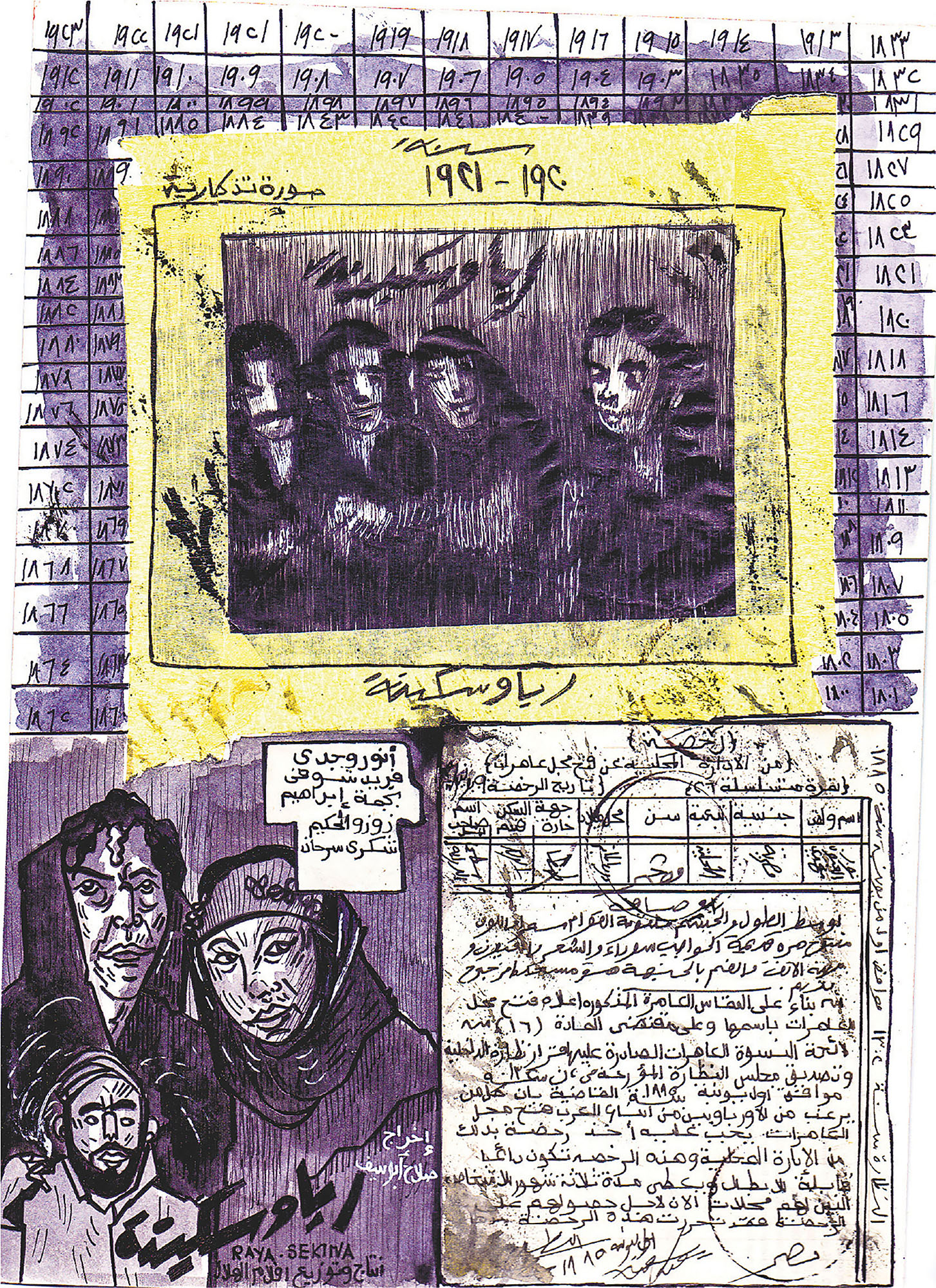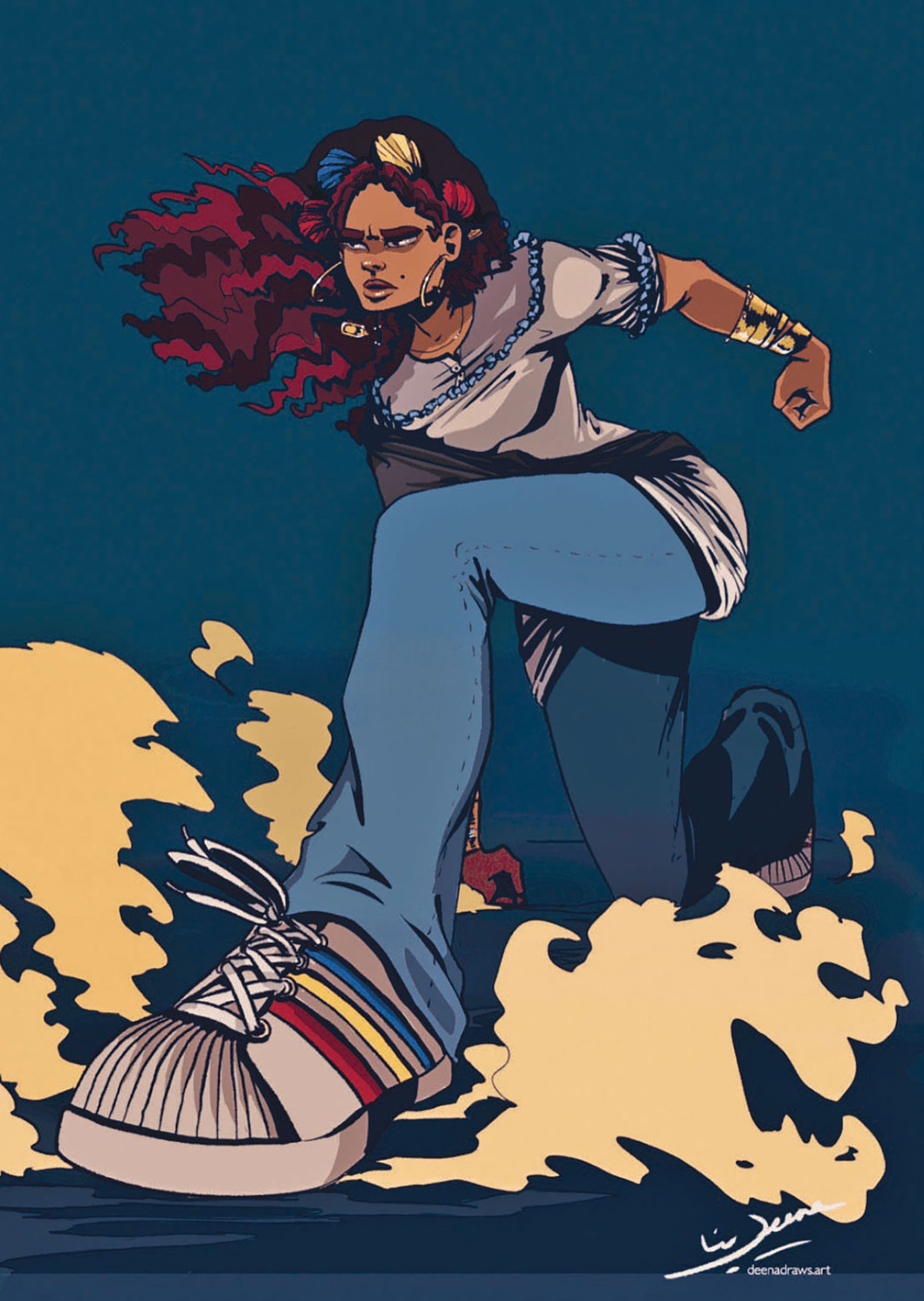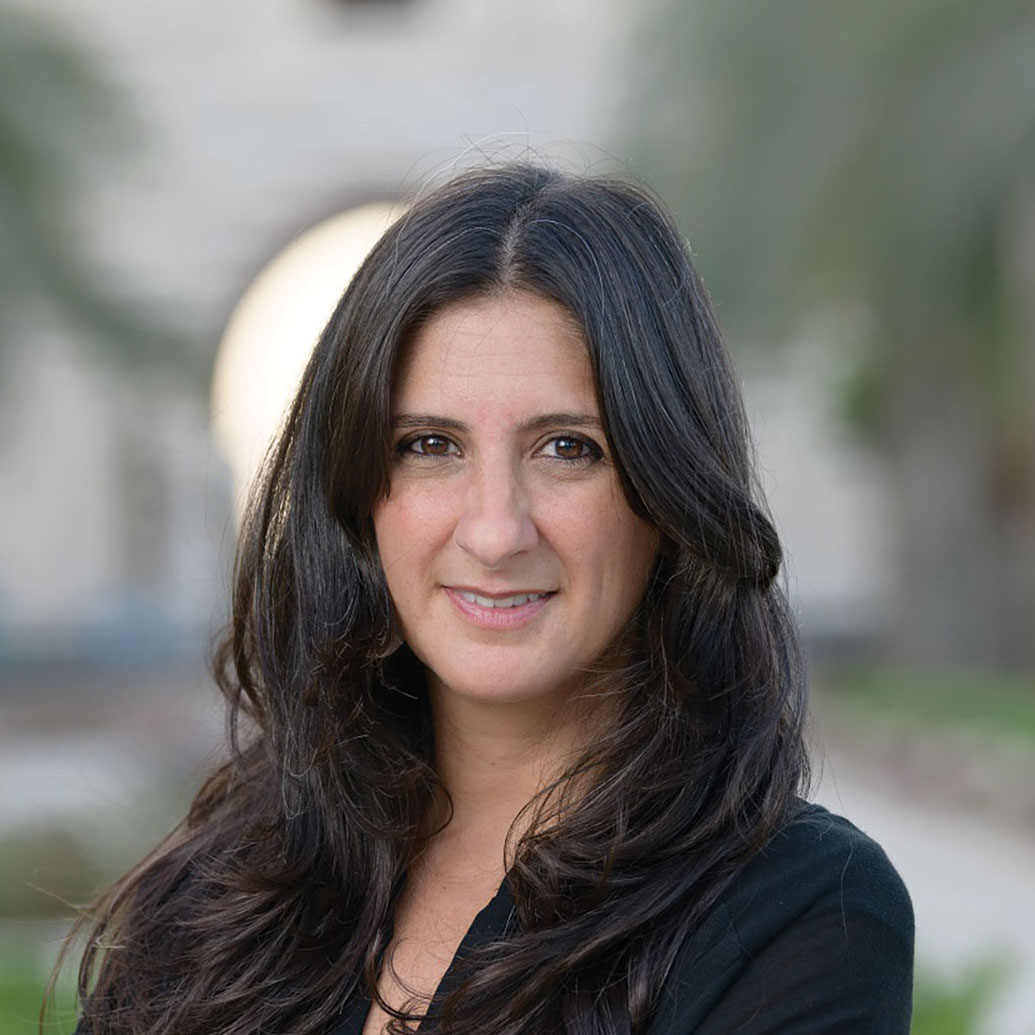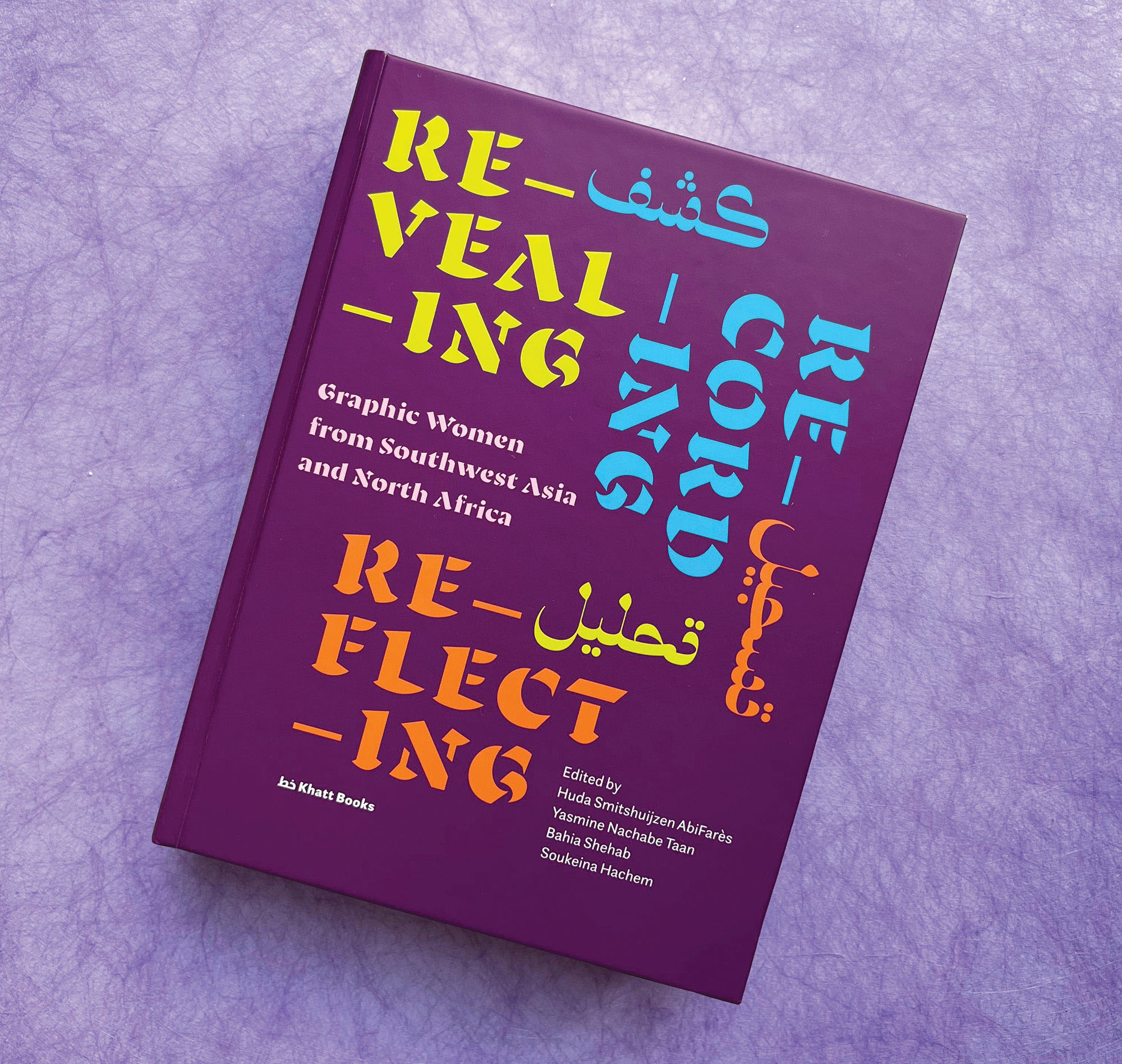A faculty member is part of a collective historical narrative on Arab women designers.
“I always insist on the collective because this is how you change history,” says Bahia Shehab (MA ’09), professor of practice in the Department of the Arts and co-editor of Revealing, Recording, Reflecting: Graphic Women from Southwest Asia and North Africa (SWANA), the first publication of its kind to document the work and legacy of contemporary women designers.
“This landmark book is about the ‘us’ of women,” says Shehab, who founded AUC’s graphic design program in 2011. ‘When people hold the book, I want them to recognize women’s voices in the Arab world. They are beautiful, they are colorful and they are varied. And they’re not limited to the geography of the Arab world. We are everywhere.”
Full of vibrant images, the book emerged from a collaborative initiative aimed at documenting and celebrating the contributions of SWANA women in the field of design. It all started when four women graphic designers from different institutions — Shehab from AUC in Egypt, Huda Smitshuijzen AbiFarès from Khatt Foundation in the Netherlands, Yasmine Nachabe Taan from the Lebanese American University in Lebanon and Soukeina Hachem from Shape interior design studio in Morocco — decided to research and showcase the work of Arab women designers. “We are four women from various parts of the region who came together to reflect, collect and reveal stories of Arab women designers,” says Shehab.
Not only were they tapping into an undocumented frontier, but their research process was atypical. “The normal route usually involves archives and a lot of reading,” explained Shehab. “But for this book, we decided to do something else: We opened up our research to a bigger community. So we were four curators, not authors. The idea is that it is a collective story of over 80 Arab women graphic designers that we are telling together, so there isn’t a single authority or voice.”
The first step for the co-editors was to focus on themes, the types of stories they want to tell. For Shehab, the choice was clear. “I love everything about Arabic design — its calligraphy, letters and typography — so I chose to work on Ladies of Letters: women who are as passionate about Arabic letters as I am. Each of us worked on a topic that she felt eager to explore in-depth.”
The book explores themes of Visual Storytelling by Women, Engaged Image-Making for Social and Political Commentary, Ladies of Letters (connecting generations of women writers and designers) and Navigating Diasporic Identities. Focusing on the work and impact of Arab women graphic designers, illustrators, calligraphers and typographers, the book includes critical writing, testimonials, primary documents and artwork.
The co-editors proposed the project online, collecting reflections on the different themes through Zoom panels and collaboration with a cultural space in Berlin, Germany for people to share their insights and recommend women in the field who can be featured in the book. “That physical space became our living research space, with sticky notes, observations, posters and new books. It was the first time for us to experiment with collective crowd-sourced research, and it was an enriching experience,” Shehab says.
Questionnaires were then sent out to women graphic designers, asking them to tell their own stories. “In the book, we are not reflecting on how they feel or assuming the meaning of their work. They are choosing what stories they want to tell — in their own words,” affirmed Shehab.

After three years of continuous work, the book was out. “It was a historic moment for us all,” says Shehab. “As artists, designers and art historians, our aim is for this book to break stereotypes about women, not just in the Arab world, but globally. The book features first-narrative stories of women that have not been told for so long, especially designers. It’s such an underrepresented, marginalized field. Designers create the visuals for everything you see around you, whether packages you consume, fonts you read, books you hold in your hand. It’s important to shed light on the contributions of women in this field that date so far back, even to the Mamluk era — hundreds of years of unspoken history.”

What Shehab takes great pride in are her students. “I am proud to say that three graduates of AUC’s graphic design program are featured in the book,” she says. “This is a testament that AUC produces world-class talent that is recognized in global publications. The selection process was rigorous; there were thousands of women to choose from. The difficult part was selecting who to include in the book, and we did that by highlighting works that were considered innovative and representative of their time.”
Officially launched at AUC Tahrir Square in May 2025, the book has received positive feedback since its publication in late 2024. As Nada Shabout, Regents Professor of Art History at the University of North Texas, puts it, “[The book] is a unique intervention to further subvert the canon that has largely excluded the ‘other’ from modern innovations. … The project specifically fills a wide gap in the literature and information about Arab women designers and their contributions in the region and the larger context of design history.”
Shehab adds, “The book is a historic document for feminist studies, for the humanities and for the design community. I hope that it will be the beginning of a larger movement, inspiring young women designers to do more work, instigating more publications on women in the field, questioning Euro-centric and male-centric narrative discourses, as well as celebrating women and their achievements.”

‘When people hold the book, I want them to recognize women’s voices in the Arab world. They are beautiful, they are colorful and they are varied. And they’re not limited to the geography of the Arab world. We are everywhere.”


